Welcome to the pool filter room! Here are some brief explanations and pictures of the standard operating equipment needed for a commercial pool to function.
In the Dungeon with Ruth's Piggys!
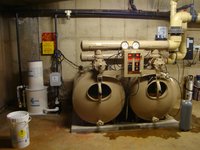



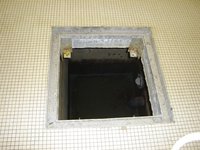

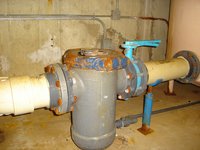
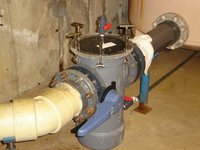
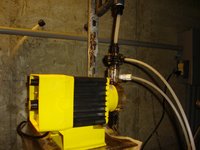



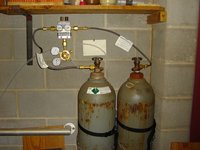

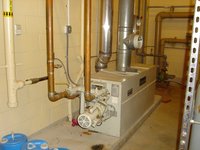

EXPLANATION OF PICTURES
Row 1 - Pool Sand Filters - Filtration is a physical process of removing soil which, if not caught, would interfere with and impede the disinfection process. Good filters stop particles from around 10-30 microns across and larger. For example, one average grain of table salt is 100 microns, human hair is 70 microns, white blood cells is 25 microns, and average bacteria is 2 microns. To give you an idea of how small 1 micron is, one micron is 0.00004 inches.
Row 2&3 - Balancing/Surge Tank - Water that is physically displaced by swimmers bodies (15 gallons per swimmer) and the wave action produced by those bodies in motion is collected by the gutters of the pool, where the water flows freely by gravity, and is collected into the balancing or surge tanks. The float arms in the tank are intended to ensure that only limited water enters the tanks, as not to fill the tank so it does not disturb the gravity flow from the gutter system.
Row 4 - Strainer Assembly - This device protects the pool pump by removing debris, such as hair, lint, finger nails, jewlery, hair ties, leaves etc. After the water leaves the balancing/surge tank, it enters the strainer assembly for screening.
Row 5 - LMI Pump/Calcium Hypo Feeders - This is the type of feeder used to allow chlorine to enter into the pool water. An LMI pump is used for liquid chlorine and a calhypo feeder is used with accutabs.
Row 6 - Probes and Control Center - The probes test the water for the PH and Chlorine levels of the pool. The Automatic Controller monitors the water chemistry. It checks conditions, makes corrections, and checks results.
Row 7 - CO2 Supply Center and Motor/Pump - CO2 helps bring down the PH levels in the pool, when necessary. Ph is the most crucial variable in the pool. The range that is allowed for the State of MA is 7.2-7.8. The controller helps us keep the pool PH levels around 7.5. The motor and pump circulate the water. These are centrifugal pumps, usually 7.5 or 10 horsepower pumps are used on the City's pools.
Row 8 - Pool Heater and Eye Wash Station - The pool heater does just what its name says, it heats the water! Normal swimming temperature ranges from 78-83 degrees, depending on the type of swimmers. Swim teams like the water on the cooler side while recreational and disablity swimmers prefer the warmer temperatures. Whatever the water temperature, the air temperature should register 2 degrees above the pool water temperature. Springfield tries to leave the pool water temperature around 81 degrees to meet all swimming abilities; therefore the air temperature should be 83 degrees. The pool heater can not heat water up in just a few minutes. We are talking about 200,000 gallons of water, so usually over one night we can increase the water temperature by a few degrees. The eye wash stations are usually found in the filter rooms of all pools. This is one of many emergency devices that are mandated to be available should an emergency arise. Other required supplies are a chemical apron, face shield and mask with ventilator and chemical gloves. All should be used when handling pool chemicals, such as chlorine.